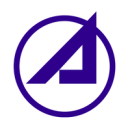“In almost every rocket movie, there is a center that houses all the experts in one room,” said The Aerospace Corporation Systems Director Rodger Charroux. “Aerospace also has such a room.”
But with the jump to remote work in the wake of Covid-19, that center was no longer available — and companies like Aerospace had to adapt.
Changing the situation room to “situation rooms” would definitely make for a different movie — the normal shots of scientists engaged in heated debate as a rocket launches would be replaced with shots of those same scientists in their home offices with their children and puppies clamoring for attention. However, with today’s technology, businesses can bring the full functionality of their offices and tech stacks to collaborate remotely — sometimes with more efficiency than before.
Charroux and his team have taken great pains to bring their Spacelift Telemetry Acquisition and Reporting System (STARS) to each employee’s remote office. Through remote desktop access tools and IT support, they don’t need to be in the room to have access to the tools they need. The in-person situation room may become obsolete — rocket movies just will have to adapt.
And The Aerospace Corporation is far from the only organization implementing technology like this to perfect remote work. Along with Rodger Charroux, Built In LA sat down with Thrive Market’s Mo Sabah and Scholly’s Mark Sowers to learn how they have invested in — and fine-tuned — the tools and processes that promote remote collaboration.

What’s an important lesson your team has learned since first transitioning to remote work?
In almost every rocket movie, there is a launch control and telemetry center that houses all the experts in one room. Aerospace also has such a room — the Spacelift Telemetry Acquisition and Reporting System (STARS) that allows us to conduct an operation together, shoulder to shoulder. With this no longer being an option and national security launch missions ongoing, we needed to find a solution. Through experimenting, we found what capabilities we wanted in remote tools — and learned to not be afraid to move on to better ones when those initial tools did not fully meet our needs.
Also, while sitting on console in STARS, there are many communication channels with which to have technical dialogs and stream telemetry to workstations — the computing and communication equipment is carefully maintained by experts to ensure perfect operation, and the users never have to worry about configuring their station. At home, the user is their own IT troubleshooter — so we built an IT support chat room where people can take their technical issues and get help from others outside of the launch operation.
How are you collaborating differently today than you were a year and a half ago?
After the AEHF-6 launch — where we made use of the launch vehicle contractor’s voice and data systems to augment the STARS tools — we identified several limitations. These shortcomings helped accelerate the deployment of Aerospace’s own STARS voice and data tools that had been in development with limited use. The next mission — Atlas V/USSF-7 in May 2020 — used the new remote desktop data access tool and the VCOM voice net application. These deployments resulted in a new ability for Aerospace to support launches remotely much earlier than originally thought possible.
Now these tools are often preferred to being in person in the STARS room. While exciting and dynamic, launch operations can sometimes be well over eight hours long with occasional periods of down time. To better help overcome fatigue, many console positions are more effective when conducted remotely at home. Remote launch operations also afford more support analysts than can be accommodated in STARS due to the current Covid-19 seating restrictions.
Through experimenting, we found what capabilities we wanted in remote tools — and learned to not be afraid to move on to better ones when those initial tools did not fully meet our needs.”
Beyond tools like Slack and Zoom, what tech tools have been particularly helpful in making remote collaboration easier and more successful?
The STARS team developed several tech tools that have made remote collaborations easier and more efficient during launch operations. The most helpful tool to be activated for the support of national security launch missions is STARS VCOM, which allows access to voice nets and video streams from the launch sites through STARS and out to the entire remote launch support team. Separate login access can accommodate Aerospace users as well as non-Aerospace personnel with USG common access card (CAC) authentication — further increasing the collaboration between the integrated Aerospace and Space Force launch teams. VCOM has allowed for remote communication via a wide range of voice nets, where crisp discussions and quick resolutions of launch countdown issues are imperative from the widespread support teams. Another useful launch support tool is STARS xRDP, which allows for remote access to STARS data and remote analysis tools by the Aerospace analysts.
What’s an important lesson your team has learned since first transitioning to remote work?
After transitioning to remote work, the biggest lesson that my team has learned is how central it is to set clear context and outline expectations early and often. Setting context is critical for any high-functioning team, but it becomes even more significant and challenging when you have folks in various locations, time zones and geographies.
At Thrive Market, we have built a top-notch tech team with some of the smartest engineers in tens of locations and countries. Having a team as distributed as ours, we have put together processes and best practices in order to improve team collaboration and drive efficiency. The primary mechanism amongst them is ensuring that our team members are fully aware of and have bought into the goals of projects early on. We have insight into blockers or bottlenecks so we can unblock teams early and often. As a result of these processes, we have been able to break down silos and drive team productivity.
How are you collaborating differently today than you were a year and a half ago?
In the last year and a half, we have fine tuned our approach to the software development life cycle (SDLC). We have rolled out cross-functional squads composed of folks from engineering, product and data along with key business stakeholders. We designed a formal kickoff process for every new project where the product owners provide insights into the why of the project, along with opportunity analysis, wireframes and user flow. This is followed by technical grooming, which culminates in tech design documents that outline the approach, trade offs and architecture in detail.
We have also encouraged squads to work in public Slack channels for greater visibility and collaboration and have daily stand-ups. In addition, we have rolled out scrum of scrum, which is a forum to check in on progress, blockers, dependencies and risks from each squad and make trade-off decisions when needed. As a result of these changes, we have been able to break down silos, drive team productivity and nimbleness and augment cross-functional collaboration, which has resulted in bigger wins than an in-office setup.
Our best practices handbook acted as a guide to help transition to a 100 percent remote work environment and improve team productivity, efficiency and cross-team collaboration. ”
Beyond tools like Slack and Zoom, what tech tools have been particularly helpful in making remote collaboration easier and more successful?
Right at the onset, we came up with a remote work best practices handbook that we shared first with the tech team and then with all of Thrive Market. The handbook acted as a guide to help transition to a 100 percent remote work environment and improve team productivity, efficiency and cross-team collaboration.
One of the most important pillars in our handbook was setting up core work hours with an eye for balancing the needs of the business with any personal obligations that we may have — such as providing care to family members. Folks are expected to keep their calendars up to date and be careful about meeting overload. We applied the responsible, accountable, consulted and informed project management model to meetings — and we asked the meeting organizers to send out an agenda and reading materials prior to the meeting as well as document decisions made. We offered tips that included advice for planning work days and taking clear breaks from work.
We encourage everybody to turn their cameras on when in Zoom meetings to improve collaboration. Apart from Zoom, Slack and Google apps, we improved our documentation and self-service automation for remote access and virtual private network.
What’s an important lesson your team has learned since first transitioning to remote work?
Transitioning to a fully remote work environment has been a nonstop lesson in teamwork, collaboration and productivity. But if anything, the biggest lesson we’ve learned is the importance of consistency. As many people have experienced, transitioning from being entirely in-person to a remote work setting was challenging. Being consistent as individuals and as a team includes holding ourselves and each other accountable for specific outcomes within agreed timelines. It also includes setting and maintaining boundaries as they apply to availability and capacity. Consistency has empowered us to bolster an environment of trust while working together to achieve Scholly’s mission and provide a superior experience for our customers and partners.
We’ve taken to leveraging collaboration tools that allow us to work together without literally all working on or discussing the same topic at the same time.”
How are you collaborating differently today than you were a year and a half ago?
Scholly has always been a highly collaborative team, but remote work has meant that collaboration has taken on new forms. One of the biggest differences is how well we’ve transitioned to collaborating asynchronously. We have team members across four time zones and it’s super important to our team culture to be respectful of work hours. So while we definitely have meetings during prime hours, we’ve taken to leveraging collaboration tools that allow us to work together without literally all working on or discussing the same topic at the same time. That means collaborative shared documents, recorded video messages and how-tos, and even scheduled emails so that inter-team discussions arrive during work hours rather than at all hours of the day and night.
Beyond tools like Slack and Zoom, what tech tools have been particularly helpful in making remote collaboration easier and more successful?
We’ve found incredible results with a number of remote collaboration tools. Some of our favorites are Airtable for project management, Loom for asynchronous video collaboration and Bonusly for remotely recognizing the hard work of colleagues. We recently transitioned to a new human resources information system which incorporates single sign-on (SSO) for many of the apps and platforms we use along with being a one-stop shop for benefits administration, company and personal documents and much more.











